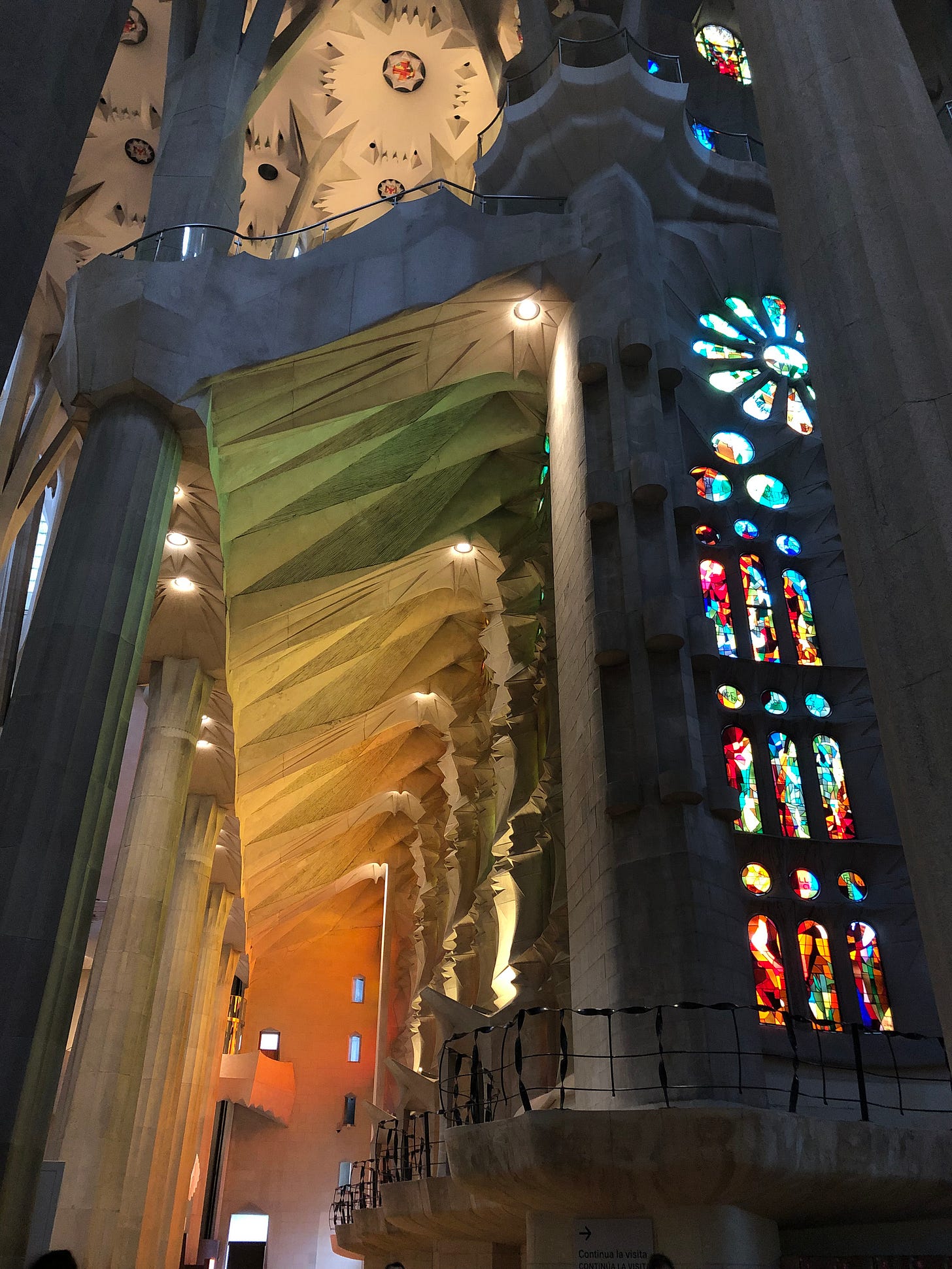What the light was like
On moving, Antoni Gaudi, and architecture as an expression of spiritual realities
As I near my one month-iversary of actually living in Nashville, the novelty of living somewhere new is starting to wear off. The rubber is hitting the road. I’m finding myself more frustrated, asking more questions. Why don’t I have more friends now? Why is church shopping so hard? Why is it so hot? The anchoring points of having a job and family nearby have given some welcome structure. But still, my interior landscape has been a bit more cloudy, a bit darker in the shuffle.
Yesterday I was reminded of a verse that I started praying back in December, around the time I made the decision to actually move:
“Send out your light and your truth; let them lead me. Let them bring me to your holy mountain, to your dwelling place.”
Psalm 43:3 CSB
Back then, in the literal darkness of New England winter and the intense internal fog I found myself encountering, this verse offered a small and steady glow, like candlelight. It was a plea for help, an honest cry of dependence— a way to name the desire for God’s presence, for Home.
Those things are still true of this verse, but yesterday it hit differently.
About six weeks ago
I had the privilege of spending some time in Barcelona, Spain. Much of Barcelona’s beauty and mystique is due to the architectural genius of Antoni Gaudi— an artist who I’m told only barely passed design school because his work didn’t fit the traditional mould. Now, his name is almost synonymous with the city itself. Scattered generously across the rolling metropolis are the parks, houses, and churches he designed.
The pinnacle of his work is the basilica La Sagrada Familia. Spires (still unfinished & still climbing higher) literally tower over the rest of the city— nothing nearby comes close in height. Even from a distance, the enormity alone of the structure had me feeling very small as I approached— such magnitude cast a deep shadow of reverence upon me. Each spire is engraved in the ascending words “sanctus, sanctus, sanctus”— a visual nod to Isaiah’s vision in Isaiah 6.
The outside facade proclaims the story of the life of Christ, making the Gospel accessible to all rather than closing it up on the inside for the religious regulars. One wall is dedicated to depicting the advent of Christ, with lifelike stone vignettes of his birth, the visit of the Magi, the proclamation of the shepherds, the flight to Egypt, etc. It is designed to make the viewer feel a sense of abundance and joy, along with awe at the intricate detail of the incarnation itself.
On the opposite facade, the wall is dedicated to showing the Passion of Christ. Statues show different scenes such as the betrayal of Judas, the denial of Peter, the decision of Pilate— all leading to the crucifixion. The style is angular, bleak, and dissonant against the fullness of the Nativity facade. Gaudi himself said he “wanted [the Passion facade] to inspire fear,” and it does. To complete the Gospel story, a sculpture high above the Passion facade depicts the resurrected and ascended Christ.
The sculpture-heavy exterior contrasts intensely with the interior.
Upon entering
the basilica, what struck me most was the spaciousness and the way light was the primary ornament. Although I visited on an overcast day, sunlight streamed through the stained glass windows, permeating the air with colored light. Huge pillars upholding the ceiling (and spires) branched out at the tops, giving the illusion that one was walking among trees. This sanctuary was designed to be a garden.
While re-reading Psalm 43:3 yesterday, the experience of walking through La Sagrada Familia flooded my imagination. Suddenly those memories of overwhelming awe within the sanctuary seemed like an embodiment of that verse, and that verse seemed like a narrative of my experience. They colored one another with an even deeper beauty. Light sent. Truth illuminating. Both lifting my gaze, leading me from spectator to participant— a worshiper in the dwelling place of God. As I reflected upon ‘what the light was like,’ I found that at that time it was bright, airy, spacious.1 My discouragement cleared as I remembered and layered new meaning into the memory. Now I could see glimmers of light all around.
“What the Light was Like” is the title of one of my old favorite poetry books by Luci Shaw




